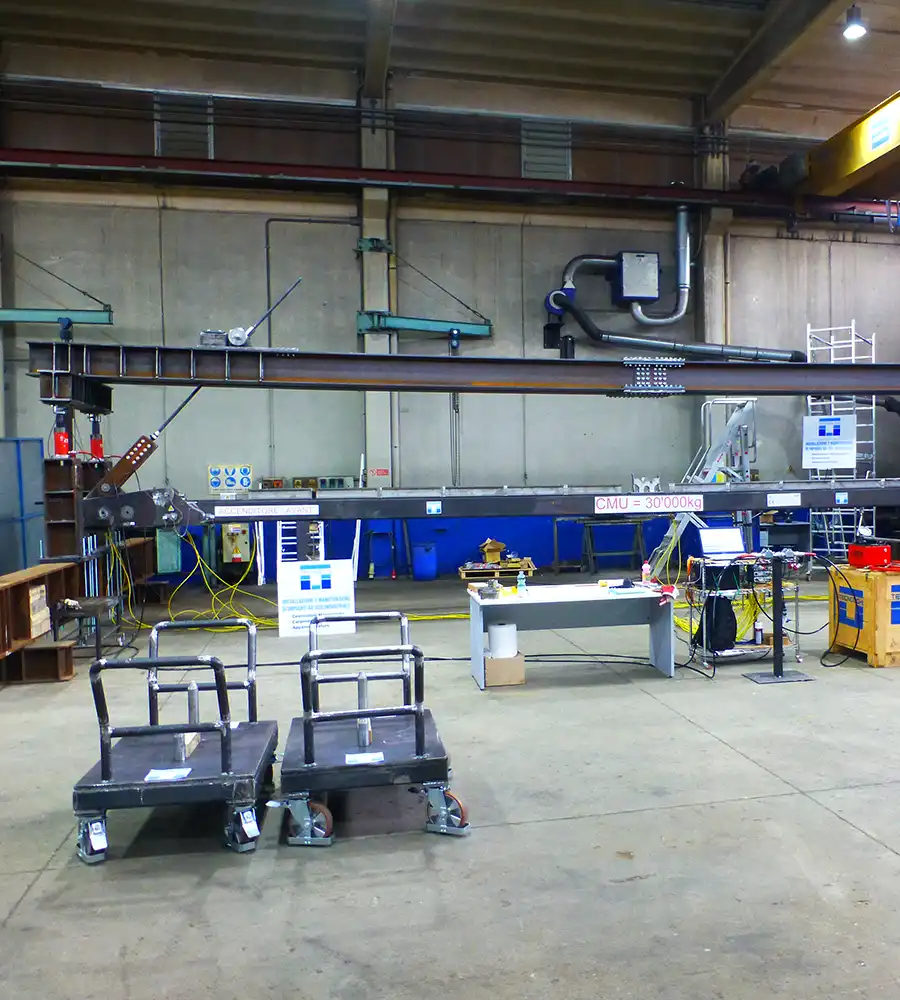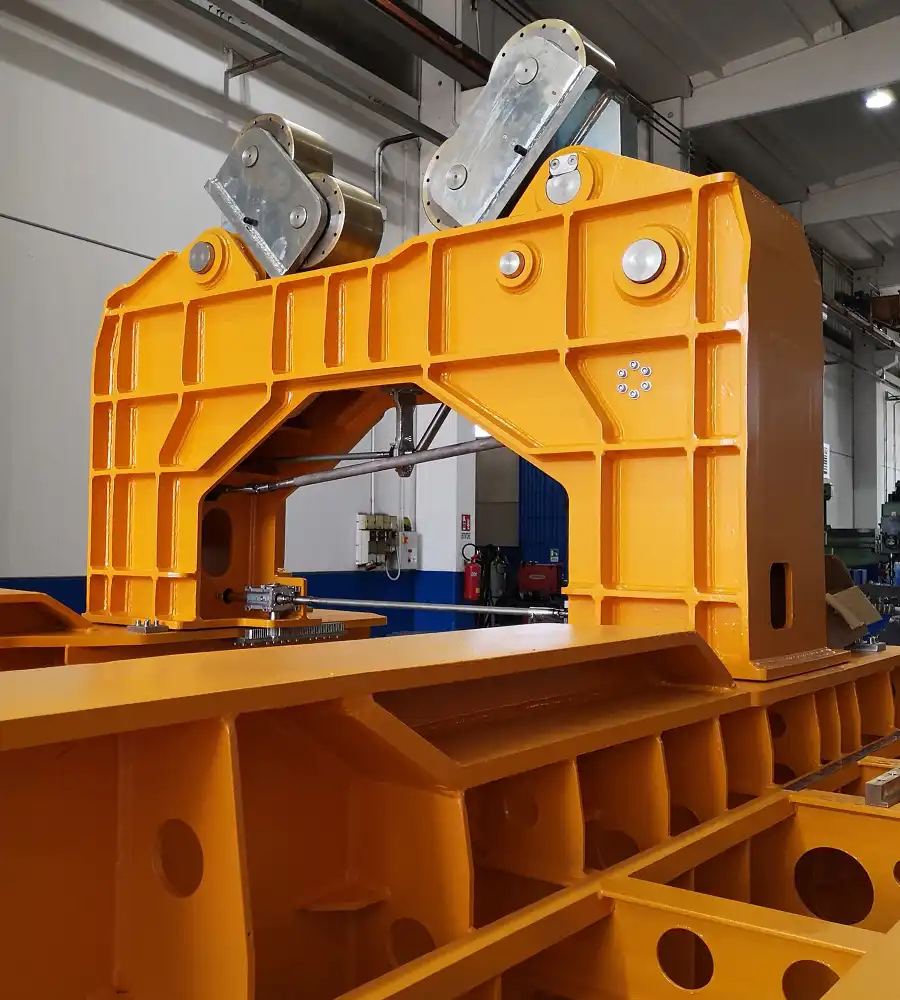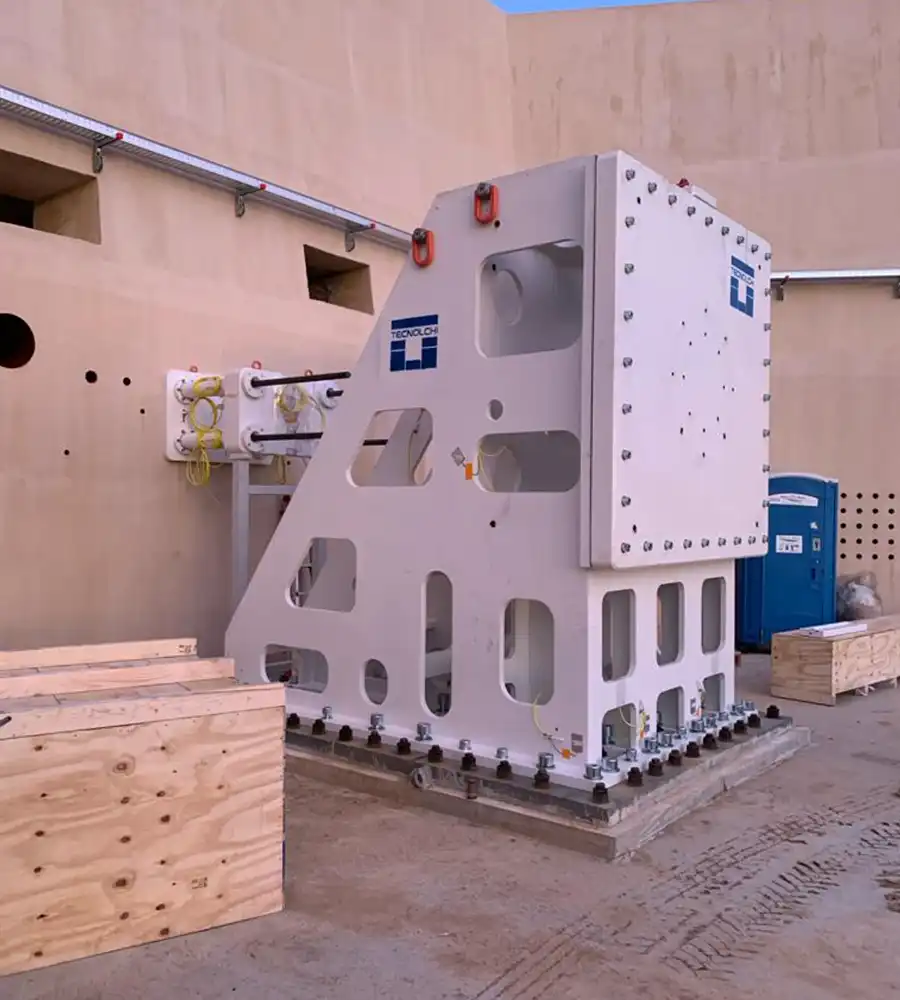We operate in the aerospace industry with expertise in:
Accomplishments
Palonnier Slinger 345
It belongs to the family of spacer bars and is intended only for lifting and handling the carbon fiber casings constituting solid propellant motors for space launchers.
OPTF Colleferro Plant
The purpose of the OPTF facility is to enable “fire testing” of liquid-propellant aerospace engines (specifically, the propellant consists of HTP and RP1). TECNOLCHI handled the fabrication, installation, testing and commissioning. The facility consists of a series of systems necessary to achieve the purpose they enable:
- Hydrogen peroxide production/transfer and RP1
- Propellant storage
- Pressurization of propellants
- Sending propellants to engines under test
The OPTF facility is designed to:
- Propellant loading
- Temperature maintenance
- Line priming
- Thermostatting of lines
- Pressurization of run-tanks
- Motor power supply
- Purging of lines and motors
- Drainage of propellants in collection tanks.
- Demi water line for engine cooling
SPTF Perdasdefogu Plant Sardinia
The SPTF is a test and development center for space propulsion, located in Perdasdefogu, Sardinia, Italy. TECNOLCHI was honored to be chosen to undertake this important project. This facility is a key resource for the study and validation of propulsion technologies for rockets, liquid propellant engines and thrust systems
used in space exploration. The SPTF is designed to:
- Engine ignition tests: They verify engine reliability and performance under simulated flight conditions
- Endurance testing: Assesses the long-term durability of the engine and its ability to operate under extreme conditions
- Environmental compatibility testing: Examines the response of the engine to various environmental factors such as temperature, pressure and vibration
- Flight simulation tests: Reproduce the operating conditions of an engine during launch and operation in space
Pallet spindle holder
Equipment intended for supporting and handling the winding spindle of carbon fiber casings constituting solid propellant motors for space launchers.
At the end of construction, the pallets are load-tested by applying a test load of 120 tons using specially constructed equipment, and the load-deformation curve is recorded, verifying that there is no residual deformation at the end of the test by means of special electronic data acquisition system (potentiometers and acquisition unit).
Project high altitude test facility
Fabrication of diffusers with outer jacket with the purpose of simulating the ignition of liquid-propellant engines under no-atmosphere conditions:
the main duct is put under vacuum and is subsequently passed through by the high temperature PLUME of the engines being tested, and at the same time high flow rate water required for cooling the system flows in the jacket
Thrust bearing + testing
Design realization, installation and testing of the Thrust Holder, serving as a test bench element, contrasting structure for the fire test of engines, which is currently completed with the Front Plate on which the engines are anchored and on which they push.
The Frame system and Extension allow the bench to be tested on the verge of each fire test of an engine, for the appropriate ritual checks.
Tipper IS01 (Kourou)
Design, fabrication, testing, shipping and installation c/o Kourou Space Center, installation and commissioning of no. 1 “Flipper/Positioner for Interstage IS01.”
A 6-axis machine capable of enabling the integration of cylindrical bodies as large as 3500 mm in diameter with decimal accuracies.
Wopla A3
The container was designed and made to allow:
- Performing the assembly and functional testing of complete stages for aerospace launchers, starting with nondestructive testing and ending with shipment to the launch center
- The rotation of the Stadium during the storage of the same
- The execution of the final preparation steps before tipping
- The installation site for such equipment is the Space Center in French Guiana.


























